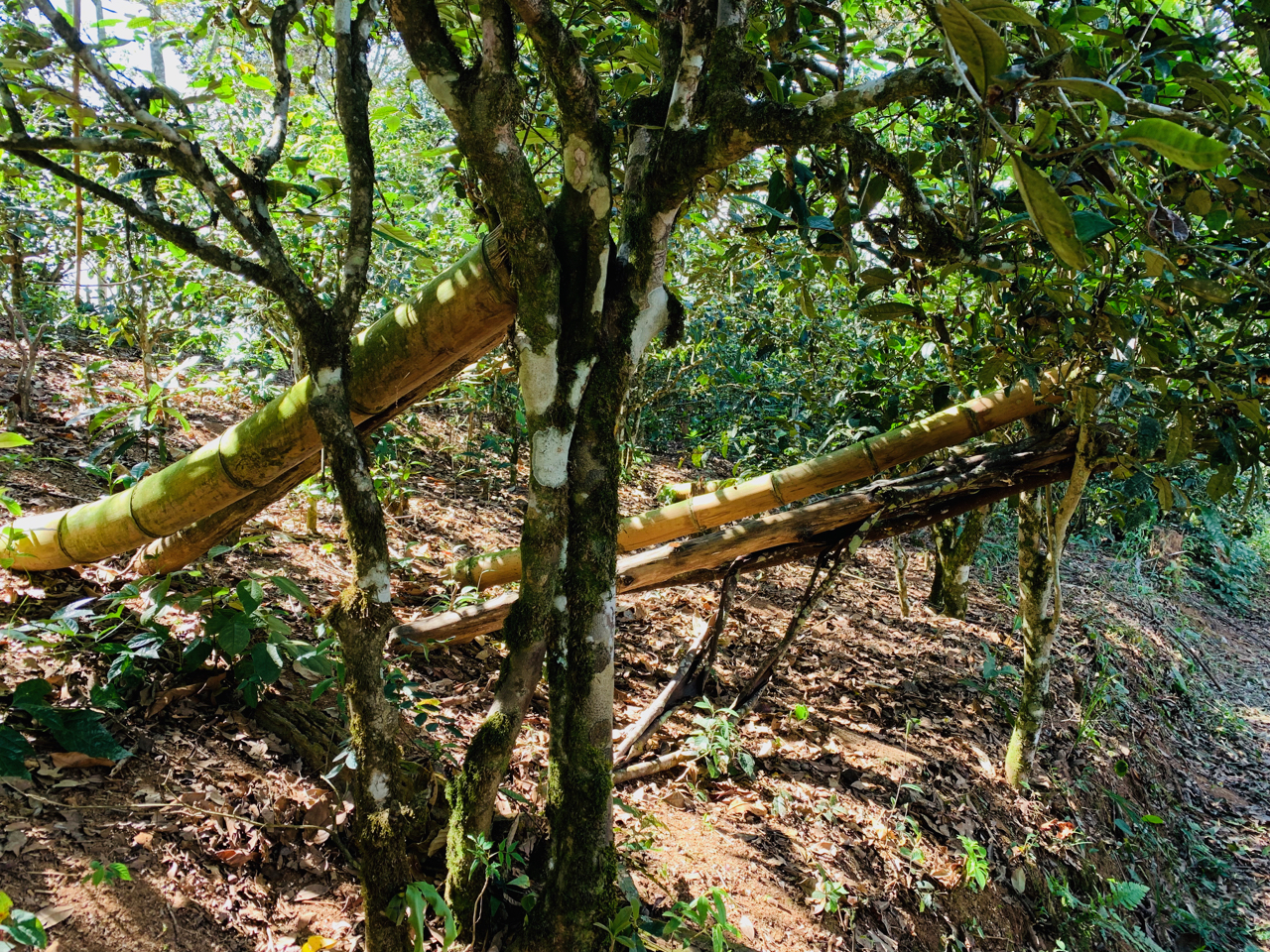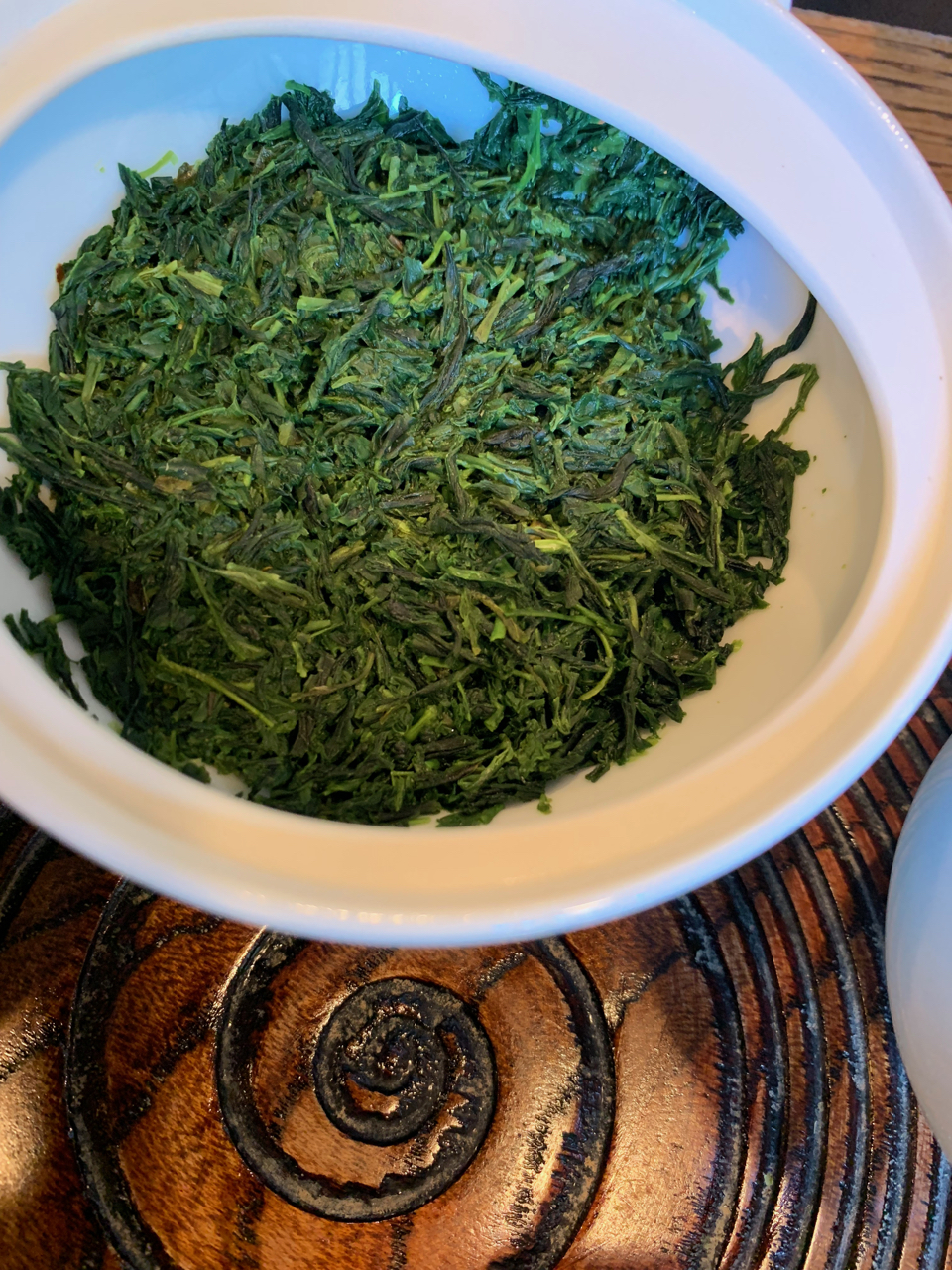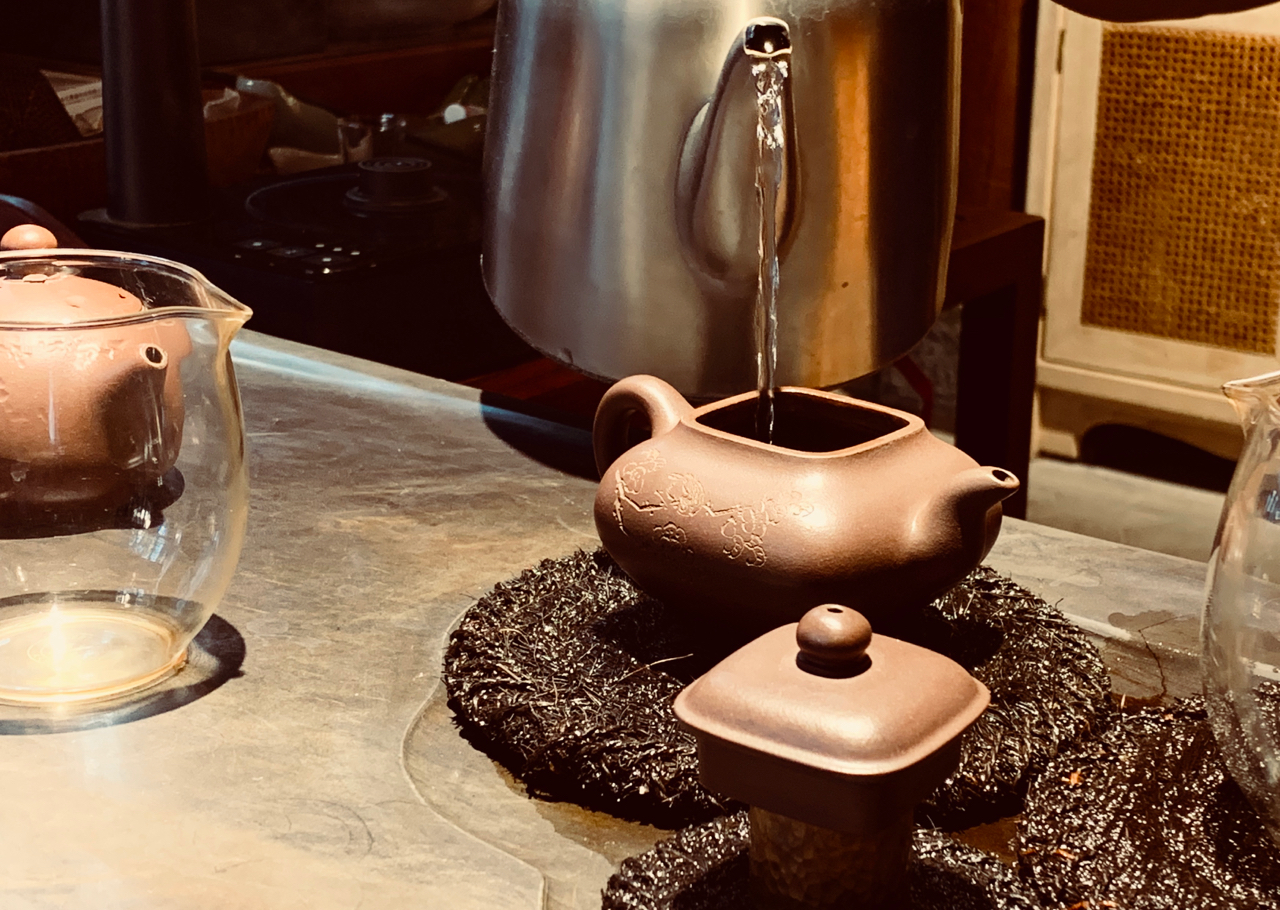A flow westward out of one of the most precision oriented cultures of the leaf to a tiny corner (and an old home of mine) in southwestern China, where the leaf is still at times an imprecise thing of random beauty. Japan gives way to Yunnan. Teas with a time and a moment give way to teas with an unpredictable possibility of brilliance.
Those taints of Umami still rolling around like a veritable memory within and upon the palate, must give way as I return to Yunnan and the home of Puerh; the tea with some vegetal bite that I’ve craved for so very long.
The so called ‘off-season’ for Puerh (in this case right now) is as informative and revealing (and perhaps more) as it is amidst the height of the manic Spring harvest that commences late February. Growers and producers have time to sit and impart their often underrated bits of information without so much panic of a sale. They take tea as they chat and they have that precious commodity of time, to spend and share.
Weather is dry and the tea forests are in a period of unmolested growth, while the villages are settled and relaxed.
Arrival to Xishuangbanna is usually a race from the airport in Jinghong to Menghai. Old friends, familiar tea houses, and an almost immediate immersion into the leaf world all await in Menghai where habits are well established. This journey is delayed only slightly in Jinghong as a recommended tea house is visited.
Mr. Feng serves Puerh in that manner that reminds that all elements can matter, even here in Yunnan. Japan’s brilliance may lie with its attention to detail and carefully managed flavour profiles, but here too there are those advocates of the leaf that are about the moment and the detail. Feng is entirely one of those.
He uses clay vessels rather than ceramic gai-wan’s. Every pot has its tea and for the upcoming 10-year old Bulang old tree Puerh offering, he selects a square chocolate vessel of burnished clay. Every thing around Feng has been kept clean, minimal and smooth. The tea on offer is harvested from 100 + year old trees, and is one of his favourites. Harvested 10 years ago, it was compressed 8 years ago into 250 gram cakes of which he nurtures one every half year or so. It is caramel given life upon the palate with strength in the edges and as the infusions run on, the mineral layers begin to arrive without really relenting.
One reminder of a strangely under-transmitted bit of information is emphasized by Feng about Puerhs and the discussion of ageing, when he says “It doesn’t matter how good a Puerh might be; if the storage of a tea isn’t managed well, that tea won’t end up a good tea”. By managing storage, he speaks of a cool, dry, aerated space without odours. It is one of the last things he says as I depart, as though imparting some wisdom that he feels isn’t given enough time.
A welcome bit of sipping and information within Feng’s tea shop and exactly the odd diversion can (and should) bring – an off-grid informative treat. It also warrants walking out of Feng’s shop with one of those 250 gram cakes tucked under my arm.

Where tea culture is still as simple as it is frequent. It takes little beyond leaves, time and some water here to enjoy a stunning leaf offering
Finally west and south I slip into the Menghai zone. Walking up through Nannuo Mountain’s shrieking air of cicada chorus, certain old trees rest with their buds freshly snipped. Only certain trees though. Most trees have all of their buds remaining, allowed to prosper and develop readying their stem channels and leaves for the future.

Old and ancient tea tree forests near Nannuo Mountain. Those ‘supports’ are actually walking planks that allow the villagers to ascend and pluck from the higher branches.
Those freshly snipped stems and missing buds remain in the mind until later, when entering a nearby village to sip of the local harvests I spot a billowing bag of ‘white’ end buds. I’m told by a local Hani producer that he is trying new things with his ancient tree Yunnan-big leaf varietals. And so, he has clipped single, yet-to-unfurl end buds and sun dried them. They are a summer harvest and they are, in the words of our young host, “an attempt”.
Their thicker skin and more durable general structure allow (he tells me) for more infusions and hotter temperatures of water. Beyond that he makes no claims but it is enough that I must sample. Slow to unleash flavours, it takes 2 infusions of around 30 seconds to start releasing a narcotic cream and floral stream into the mouth. While lacking perhaps some of the delicacy that one associates with classic ‘white’ teas, like Silver Needle or White Peony, it carries some of the strength of a Gong Mei (Tribute Eyebrow), which like this ‘Puerh White’, is harvested later in the Spring or Summer.

The heat end of the production area in a small village. Wood is carefully burned in small vertical holes to heat pans, which are located ‘behind’ the wall. With the white tea above, the leaves are simply picked and sun and shade dried.
The young man speaks of diets and changing tastes, the rise of coffee amongst the young, and he speaks of increasing efforts to find different markets for leaves typically used for pan fried Puerh. He is a simple entrepreneur with great raw materials giving something new a shot.
Everyone wants a piece of the coveted elite strata of Puerh, which while lucrative to some, actually doesn’t apply to very many areas or villages beyond the big fabled few names within the Puerh tea world. This young producer is part of the movement forward.

I get into the action discussing the move by locals from solely Puerh production into red and white tea production
A bag of his white also finds its way under my arm.





